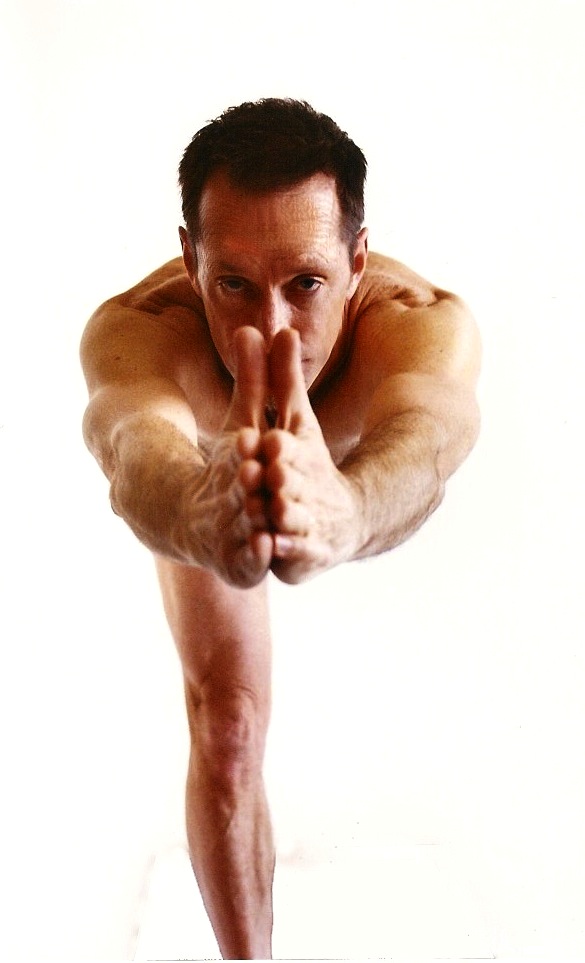
When you do a yoga posture in class, your teacher gives you cues to deepen the posture and to further experience the essence of the pose. As you practice Virabhadrasana 2 (Warrior 2), you bend your right knee and turn it outward; straighten your left leg, pressing it back and turning it outward; lift and broaden your chest, release your shoulders, etc., all the time attending to a steady breath, solid footing, and inward focus.

One of the main themes in our teacher training program is how these alignment cues are actually the pathway to personal transformation, or growth. In the pursuit of these alignment ideals, the benefits of yoga are delivered. How does alignment bear in this process and what are the misconceptions or misuse of alignment cues?
Every yoga posture (“asana”) is an artificial construction intended to bring problems to the yogi. In the above example, bending the right knee pulls the left leg in and the lumbar spine forward, collapsing the chest.In our training, we call this the “dynamic tension” of the pose.
When the alignment ideals or cues are followed, the yogi solves these problems. Too much of any one action results in failure to pursue another, so the yogi finds that personal point of balance between all of the actions. In addition, this balance is being pursued in the context of the practitioner’s personal capacity or ability. Pursing the ideal to its limits without injuring one’s self is “finding or playing the edge” of the pose. In the absence of the alignment of the pose, it loses its structure, the puzzle is avoided, and we are like dogs chasing our own tails.

This exercise of playing the edge and evenly pursing the dynamic tension of a yoga asana momentarily creates an inward focus of the senses and creates a focal point for concentration. While all of this is being juggled, the mind isn’t wandering. In that moment, a state of meditation is entered, if only briefly and perhaps at a superficial level. Still, the sense of well-being from this focused mental awareness is so strong, it brings most of us back for more!
Having to juggle all of these puzzles and their balanced solution builds up our willpower, or “stick with it”-ness, expanding our capacity for self-awareness or consciousness, and our ability to pursue our higher goals in life. The sanskrit term is tapas, translated as austerity, fire, discipline. In fact, the sanskrit term hatha means persistence or force; this is hatha yoga.
On a physical level, balanced pursuit of alignment with the application of tapas results in physical transformation. In our example above, the abdomen and buttocks are strengthened, the groin is lengthened, (reducing everyday strain on the lower back, expanding the abdominal cavity for better organ function, and improving freedom in the hips for better alignment of the upper legs and reducing stress on knees and feet), the back is strengthened to help open the chest, etc. All of this is possible when the problem, created by the alignment cues of the asana, are pursued with will.
Remember that yoga is action. This is why our graduates are trained to use action verbs to convey the dynamic tension of the asana. “Straighten your leg and turn it outward.” “Lift your chest and drop your shoulders.” These simple statements convey the actions necessary to realize the benefits of the practice. Descriptive statements are avoided, because they don’t focus the student on the action and put them in a passive role, e.g., “The leg is straight.” “The hips are square.” “The chest is lifted”, etc. Here we are almost an observer, and the pose seems lifeless, or like a photograph. The alignment cues don’t really put us into the problem.
Alignment is not really perfect-able; if it is, the asana is no longer serving a purpose and the practice needs to be changed. Likewise, alignment is a facet of the poses that is essential, but is not the point of the practice.
David Nelson is a co-owner of Yoga Garden SF, since 1998. He teaches alignment-based hatha yoga at Yoga Garden, and lectures on theory and practice of yoga in the YGSF Advanced Studies programs. More info here.


